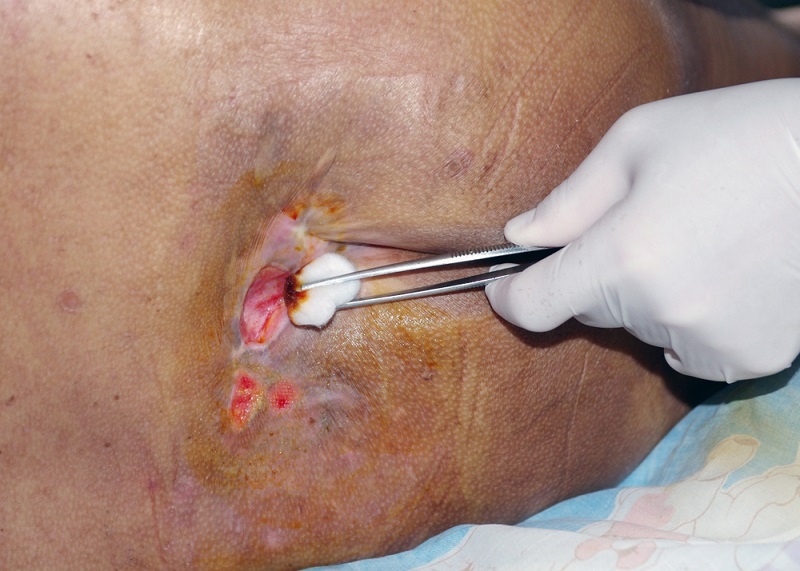Healing from Within: Understanding and Treating Bedsores

Bedsores, also known as pressure ulcers or decubitus ulcers, are a common and distressing medical condition. They occur when prolonged pressure on the skin damages the underlying tissues, leading to open wounds. Bedsores often affect individuals with limited mobility, such as those who are bedridden or confined to a wheelchair. Understanding the causes, stages, and effective treatments for bedsores is crucial for promoting healing and preventing further complications.
Causes and Risk Factors

Bedsores typically develop in areas where the skin is exposed to prolonged pressure, friction, or shear forces. The most commonly affected regions include the heels, hips, tailbone, and elbows. Several risk factors contribute to the development of bedsores, including:
- Immobility: Individuals who spend extended periods in bed or sitting in one position are more susceptible to bedsores.
- Lack of Sensation: Patients with reduced sensation due to medical conditions like diabetes or spinal cord injuries may be unaware of the pressure exerted on their skin.
- Poor Nutrition: Inadequate intake of nutrients, particularly proteins and vitamins, can impair the body's ability to repair damaged tissues.
- Age: Older adults are at a higher risk due to decreased skin elasticity and blood circulation.
- Moisture and Incontinence: Prolonged exposure to moisture from sweat or urine weakens the skin's integrity, making it more vulnerable to injury.
- Medical Conditions: Certain diseases, such as diabetes and vascular diseases, can compromise blood flow and increase the risk of developing bedsores.
Stages of Bedsores
Bedsores progress through four stages, each representing varying degrees of tissue damage. Understanding these stages helps in determining the appropriate treatment approach:
- Stage 1: The skin appears red, but does not break. It may feel warmer or cooler than the surrounding areas and may be painful or itchy.
- Stage 2: The skin breaks, forming an open wound, or a shallow ulcer. The area around the sore may be red and swollen.
- Stage 3: The ulcer deepens, extending into the underlying tissue layers. Signs of infection, such as pus or a foul odor, may be present.
- Stage 4: The wound reaches the muscle, tendon, or bone. Severe damage is evident, with extensive tissue loss and potential infection.
Treatment and Prevention

Effective treatment and prevention strategies for bedsores involve a comprehensive approach focused on healing from within. Here are some essential steps:
- Relieve Pressure: Regularly repositioning the patient and using specialized cushions or mattresses that distribute pressure evenly can help alleviate pressure on vulnerable areas.
- Keep the Skin Clean and Dry: Gently cleanse the skin with mild soap and warm water, pat dry, and use moisture-absorbing powders or barrier creams to maintain dryness.
- Optimize Nutrition: A well-balanced diet rich in protein, vitamins (especially vitamin C and zinc), and fluids supports tissue repair and strengthens the immune system.
- Provide Wound Care: Depending on the stage, treatment may involve cleaning the wound, applying antimicrobial dressings, or using advanced therapies such as negative pressure wound therapy or bioengineered skin substitutes.
- Manage Incontinence: Promptly address issues of incontinence by using absorbent products, implementing toileting schedules, and practicing good hygiene.
- Promote Physical Activity: Encourage mobility and exercises that improve blood circulation, muscle strength, and overall well-being.
Should you see a doctor?
While mild cases of bedsores can often be managed at home with proper care, it is crucial to seek medical attention if you notice any signs of infection, worsening symptoms, or if the bedsores do not improve within a few weeks. Here are a few situations when it is advisable to consult a doctor:
- Signs of Infection: If you observe any signs of infection, such as increased pain, redness, swelling, warmth, or the presence of pus or a foul odor, it is important to seek immediate medical attention. Infections can quickly spread and lead to serious complications if left untreated.
- Worsening Symptoms: If the bedsores are progressing to deeper stages, despite your best efforts at home care, it is essential to consult a healthcare professional. They can assess the severity of the wounds, determine the appropriate treatment plan, and provide specialized wound care if necessary.
Remember, healthcare providers have the knowledge and expertise to evaluate and manage bedsores effectively. Seeking timely medical intervention can help prevent further complications, promote faster healing, and ensure the best possible outcome for the individual affected by bedsores.
Conclusion
Healing bedsores requires a multidimensional approach that addresses the underlying causes while promoting optimal recovery. By understanding the causes, stages, and treatments for bedsores, healthcare providers and caregivers can implement effective strategies to heal existing wounds and prevent future occurrences. Remember, healing from within is essential for restoring the well-being and comfort of individuals affected by bedsores.
This content was created by AI
